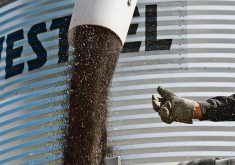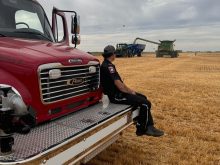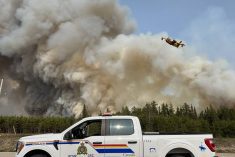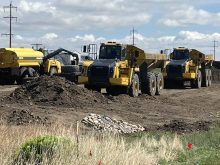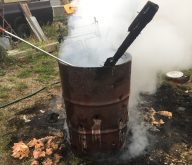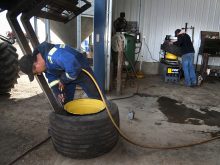A serious accident at a ranch, farm or feedlot can have ramifications not just to the injured party but the continued operations of the workplace, with health and safety investigators, police and media scrutinizing the situation.
Chris Spasoff, lawyer with F2 Legal Counsel specializing in cases involving Alberta’s Occupational Health and Safety (OH&S), said it’s best to understand the system to prevent making a bad situation worse.
Speaking as part of AgSafe Alberta’s Growing Farm Safety Series, Spasoff highlighted how the flurry of activity, investigations and questions from reporters after an incident occurs is just the tip of the iceberg of how such incidents play out.
Read Also

Huge Black Sea flax crop to provide stiff competition
Russia and Kazakhstan harvested huge flax crops and will be providing stiff competition in China and the EU.
“In a little bit of time, that dies down. Things kind of seemingly enter into a state of abeyance. You don’t hear anything for several months. A year, maybe a year-and-a-half goes by,” said Spasoff in his webinar titled, Weathering the Storm: What to Expect when a Serious Incident Occurs. “And then you get this innocuous phone call from Occupational Health and Safety.”
That phone call will follow up on details of what other contractors might be involved, their status and other information on who was on site.
“And then, lo and behold, a month or two after that just as you are coming up on the two-year deadline, you end up receiving an information in the mail, which is the charging document (that) says you’ve been charged with an occupational health and safety offence,” said Spasoff.
It’s important to understand the powers at play when a serious injury occurs on an agricultural site, not only on the operation’s side but how the regulators view such a workplace incident.
Shortly after a call is received by OH&S concerning a workplace injury, investigators will be dispatched, a stop-work order is more than likely, requests for documents will follow along with the names and contact information for employees and those on site for interviews.
Recorded interviews of those on-site and other employees take place right away along with seizing equipment involved as well as documentation.
“Those steps are taken immediately following an incident. There is no cooling off or grace period to allow people to process or digest what’s happened,” said Spasoff.
The usual process will see a contact order issued within 48 hours outlining the initial steps taken by OH&S followed by an order for other information and documentation with a deadline for compliance.
Contained in those OH&S documents will be instructions on what needs to be done to lift a stop-work order and within a couple of months, regulators will expect an incident report to be completed by the person responsible for the workplace.
That’s when a lull in the process will occur, prior to receiving a follow-up call later.
“That 18- to 22-month follow up, that’s a sign something is very likely to come from it,” said Spasoff. “It’s an indication that file has been bumped up to the Crown prosecutor’s office and, far from putting the file to bed, what they are doing is gearing up for a prosecution.”
An incident doesn’t always lead to charges. But Spasoff said if a publicly available incident report isn’t posted on the OH&S website or there is no correspondence before the follow-up call by investigators outlining an administrative penalty, charges are likely.
“A lot of times within the first 90 minutes following an incident — certainly within the first 24 hours — an individual or organization will sink their own battleship,” said Spasoff. “In so many cases I’m involved with, there are decisions made immediately following the incident that two years later, once charges are laid, once the file comes to a conclusion from the OH&S officer standpoint, once it finds its way to Crown disclosure, there is so much in there that I simply can’t address.”
It’s important to understand OH&S investigators are different from inspectors.
Spasoff said unlike inspectors, investigators, “aren’t there to help you…. Their job is to make sure (an incident) doesn’t happen again, that nobody else gets hurt and to see if you stepped offside of the legislation.”
While a farm or ranch operator might be inclined not to call legal counsel because they feel they did nothing wrong, Spasoff said that’s a mistake.
“At the most basic level, it fails to appreciate that an OH&S prosecution isn’t really about them trying to prove you did something wrong. It’s not about that. It’s about proving you didn’t do everything right,” he said.
Agricultural operators can trap themselves in numerous pitfalls, from not ensuring they are aware of what investigators are looking at on site, to providing information not relevant to an investigation, to providing relevant information late.
Spasoff said once authorities are notified of a serious injury or death, the next call should be to a lawyer to ensure the protections available to an agricultural operation are enacted before charges are laid.






